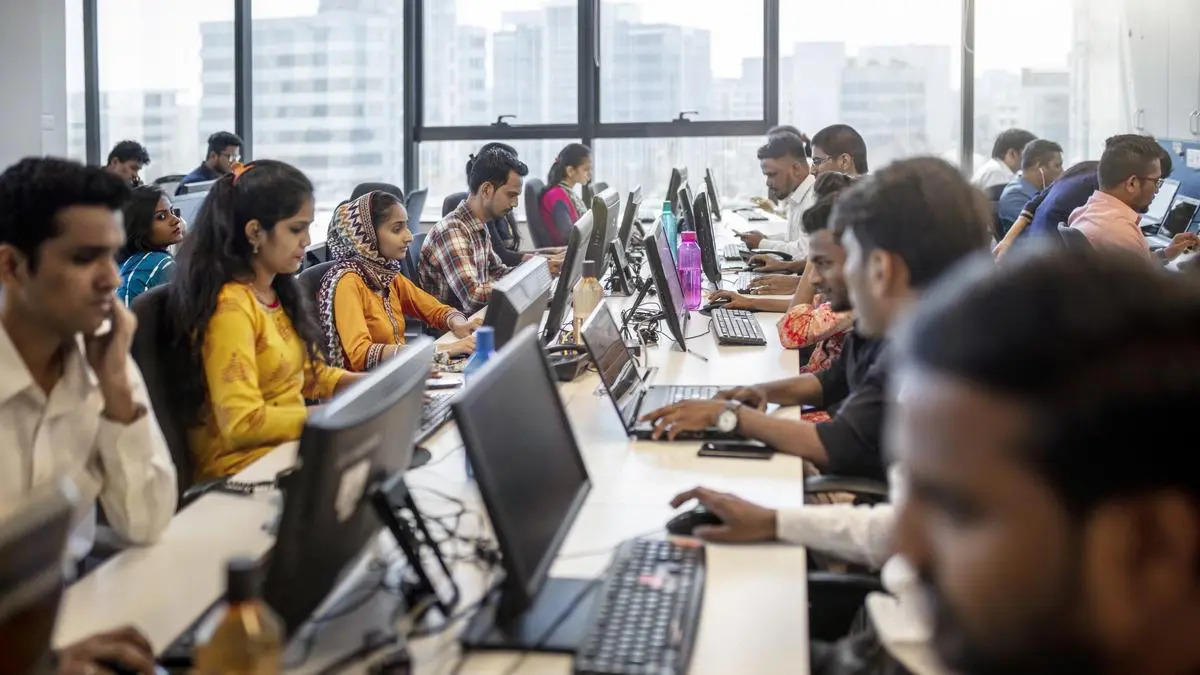By Paran Balakrishna
Copyright thehindubusinessline

It’s a private member’s bill that’s unlikely to win passage. But the Halt International Relocation of Employment (HIRE) Bill introduced in the US Senate has sent a chill through India’s software services industry. Add to that the aggressive messaging from far-right activist Laura Loomer, an ally of US President Donald Trump, who is calling on Washington to “make call centres American again.”
India’s IT giants have no choice but to pay attention. The HIRE Bill proposes a 25 per cent tariff on all work sent abroad. That could devastate India’s star IT players, while also hurting scores of other countries. At the same time, it would raise costs for US companies, which would have to get their work done domestically or pay a tariff on anything outsourced. The biggest US firms would all be badly impacted, points out Pareekh Jain, founder of EIIR Trend, who adds: “This is only to create pressure because they have challenges in their market about employment.”
Business model
But passed or not, the HIRE Bill drives home the fact that India’s software services companies will have to rethink their business models and the way they operate. The HIRE Bill is just one danger on the horizon; the greater challenge is AI, which threatens to upend the industry’s way of functioning.
Almost all Indian IT players have focused the bulk of their attention on the US. India’s tech outsourcing machine sells more to North America than anywhere else.
NASSCOM’s annual review estimates the industry will clock about $282 billion this fiscal year, with over 62 per cent of exports headed there. Any US move to limit or ban outsourcing would result in a massive hit.
Take the big three: TCS derived 48.2 per cent of revenue from North America last year, according to company figures. Infosys booked 57.9 per cent. Wipro reported around 60 per cent.
It may now be time to look more seriously at Europe and the Global South. Indian IT firms already hold plenty of contracts in Europe, but the US has always been the easiest market. Now, newer fields of operation such as Southeast Asia and Africa may have to come into sharper focus. These markets could be tough to penetrate at first, but a start must be made.
Despite the US row over outsourcing, Indian companies have landed sizeable contracts in recent months. But both the Indian firms and their American clients are keen to downplay the size of those deals to avoid controversy. As a result, several contracts have been structured as long-term arrangements, spread over years.
Still, there’s a catch. Over the last two decades, Indian IT services companies have perfected a model that depends on large volumes of work done by low-paid junior employees. But AI is reducing the role of junior staff, notes Jain. This means margins are being squeezed on almost every project: the old profit engine — cheap juniors doing bulk work — vanishes, but the replacement model hasn’t yet developed the same margins. “If you reduce the number of junior employees, the overall project margins are coming down,” Jain says.
Can Indian companies raise prices to compensate? “Then global companies become more competitive. Your advantage is that your price is less,” Jain observes.
The reality is that Indian software giants must now hire top-tier talent capable of working with fast-evolving AI models.
Almost three decades ago, Indian companies muscled into the US and beyond by offering to do work for 25 per cent less than anyone else. Today, they face the danger of being undercut in the same way, this time by Eastern European rivals wielding AI to drive costs even lower. If everyone uses similar AI tools, projects become more standardised. That makes it harder for Indian IT firms to charge a premium, further squeezing profits.
The only way forward is to start raising salaries and bring in the best talent possible. But heavy investments in AI tools and infrastructure will erode the margin advantage they once gained from cheap junior staff. And that poses another problem: shrinking margins could immediately hit share prices.
One fact is certain: corporations worldwide will continue to need services and people to manage them. “You might need 20 per cent fewer people. But there are so many AI models, so much software. They will need someone to manage all this,” Jain says. However, the business model and pricing will be different.
Are Indian companies ready to tackle this new tech world order? That’s the giant question looming over the industry. If they don’t move quickly, a new challenger could emerge, using new technology to undercut India’s old stars.
Published on September 10, 2025



